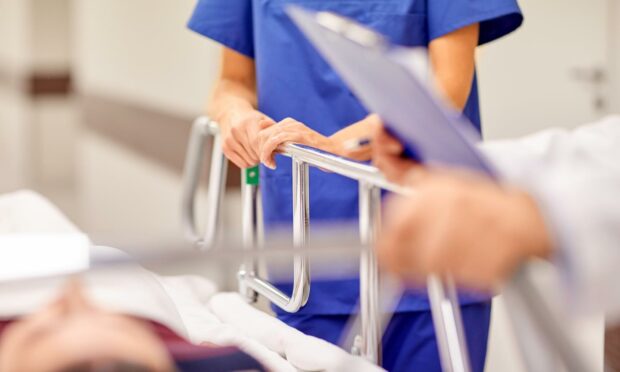Patients with spinal injuries are regaining movement in their hands and feet for the first time after taking part in a Glasgow trial.
Breakthroughs include a former rugby player who suffered a devastating spinal injury 20 years ago – who is now able to move his toes and hold a mobile phone for the first time.
The results are being hailed as “the most significant breakthrough for more than 15 years”.
NHS Greater Glasgow and Clyde was chosen to take part in the first UK study of its kind – which involves using a small device called Up-Lift on tetraplegic patients aged between 25 and 40.
The device has been likened to a TENS (transcutaneous electrical nerve stimulation) machine which uses electrical currents to relieve pain, commonly used by women during labour.
How does it work?
When the spinal cord endures trauma, usually it is just a section that is affected which prevents messages between the brain and the body.
And patients involved in Glasgow trial have their messages described as “completely interrupted”.
However, the areas above and below the affected section of the spinal cord are usually healthy and so, the Up-Lift device uses electrodes placed on the skin to activate the nerves below the level of injury.
Early results have so far been described as “significant”.
Dr Mariel Purcell, a consultant in spinal injuries, who is leading the study, told the Herald: “Fifteen years ago we were all excited about the potential of stem cells but stem cells never demonstrated any improvement like this.
“We tested it on four patients and were very excited about what we saw. Patients demonstrated quite significant improvements in their condition.
“Two of them responded fantastically to it and two had an average response.
“There seems to be sort of way of getting the two parts of the healthy spinal chord talking to each other again but using this almost as a bridge.
“When someone is paralysed, it’s not just their arms and legs that they can’t move, they have problems with their breathing, they have problems with their blood pressure, with their bladder function – everything below where the damage to the spinal chord is affected.
“Even temperature control and this treatment seems to result in improvement in a lot of those areas – not just in the arms and legs – and that improvement seems to be sustained after the treatment stops.”
The doctor recalled how a consultant ran in to her room after one trial participant had experienced a breakthrough in his condition.
‘You have to see this’
“She was saying, come on, come on, you have to see this.
“One patient is a young lad who was injured playing rugby at the age of 16 and had been completely paralysed – there was nothing happening at all from his neck down.
“He had the intervention three times a week for a month. After two weeks he had some movement in his arms. Bear in mind these are arms that haven’t moved in 16 years, the muscle was completely wasted away.
“He was able to bend and straighten his arm at the elbow which he had never been able to do and he had a little bit of movement in his fingers. He also had some movement in his toes for the first time.
‘Big changes after small period of treatment’
“He was now able to use a mobile phone and move his wheelchair. These are big changes after a small period of treatment.”
Dr Purcell added that the man had been awaiting surgery to improve his bladder function.
Yet after his involvement in the 12-week Up-Lift trial, he no longer required the surgery while his low blood pressure returned to normal.
More than that and despite acknowledging that reversing damage completely is “currently out of reach”, doctors are hopeful that testing the device on newly injured patients could be even more significant.
“We’ve been working with chronic patients, who have recovered as much as they are going to but I see in the future we will be using it on patients with new injuries, early on in their rehabilitation,” said Dr Purcell.
More patients to take part
“They are the ones who are going to benefit most,” she added, saying that results were sustained “after just a short period of treatment.”
“We are still early on in establishing how much therapy they should be getting, how long should they get it for, what is happening to the nervous system when they are getting it and how long is the improvement going to last.”
Three more patients have now been recruited for the next phase of the study – including one patient who has relocated from England.
The first half of the study involves eight weeks of intensive therapy before receiving stimulation to the spinal cord and traditional upper limb therapy for another eight weeks.
Just 14 centres are involved in the trial world-wide.
